Abstract
NP-1, a candidacidal peptide purified from rabbit granulocytes, bound extensively and with biphasic kinetics to Candida albicans. The primary phase of binding was temperature independent and occurred even at 0 degrees C. This primary binding was relatively specific, reversible, saturable, and of high capacity. It was inhibited by increased salt concentrations in the incubation medium, but was relatively unaffected by increasing the calcium ion concentration or by lowering the incubation temperature to 0 degrees C. The secondary phase of binding was only noted under conditions that supported candidacidal activity. Secondary binding was inhibited by millimolar concentrations of calcium, but not magnesium, ions and did not occur at 0 degrees C or when subtoxic concentrations of NP-1 were tested. NP-2 and NP-3a, other potent candidacidal peptides from rabbit granulocytes, also bound directly and extensively to C. albicans and competed for binding with NP-1. NP-4 and NP-5, less candidacidally active homologs of the aforementioned peptides, showed relatively little direct binding activity and competed poorly for binding with NP-1 or NP-2. NP-3b, another less candidacidal homolog, bound extensively to C. albicans, but did not compete effectively with NP-1 or NP-2. By comparing candidacidal and binding activity of the peptides, we conclude that the candidacidal activity of NP-1 involves primary binding to C. albicans followed by postbinding events that are temperature dependent and inhibitable by calcium ions.
Full text
PDF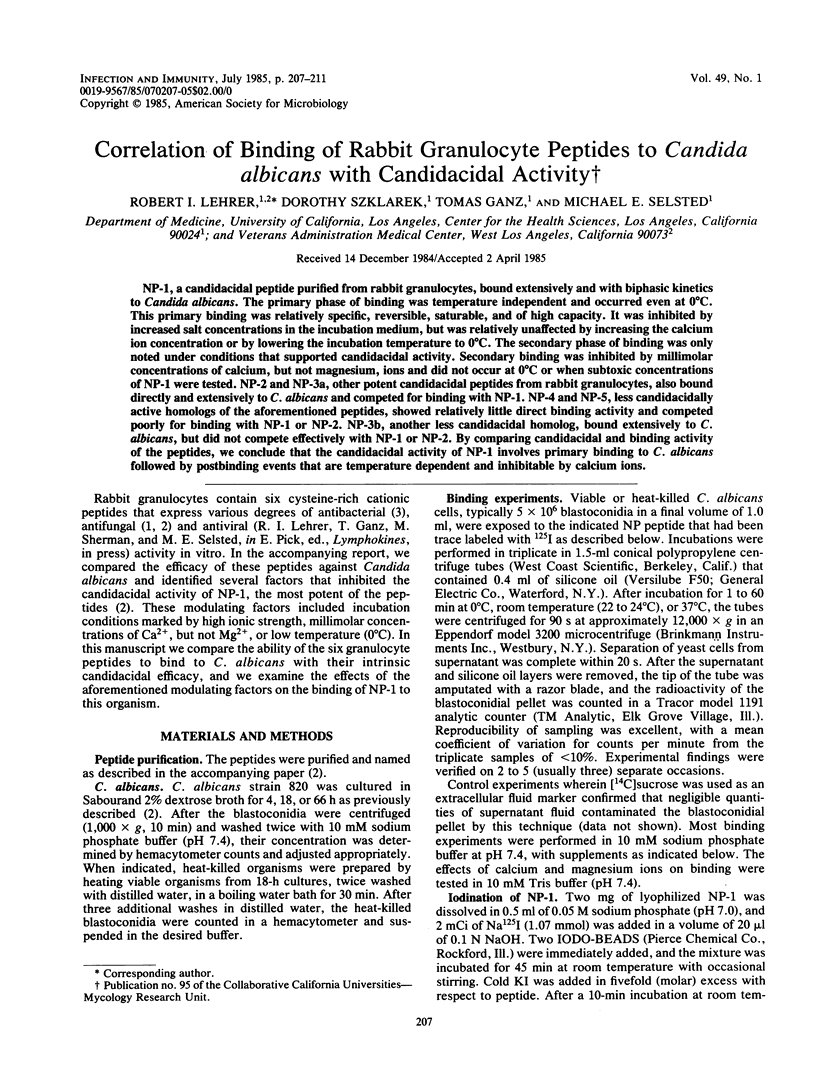
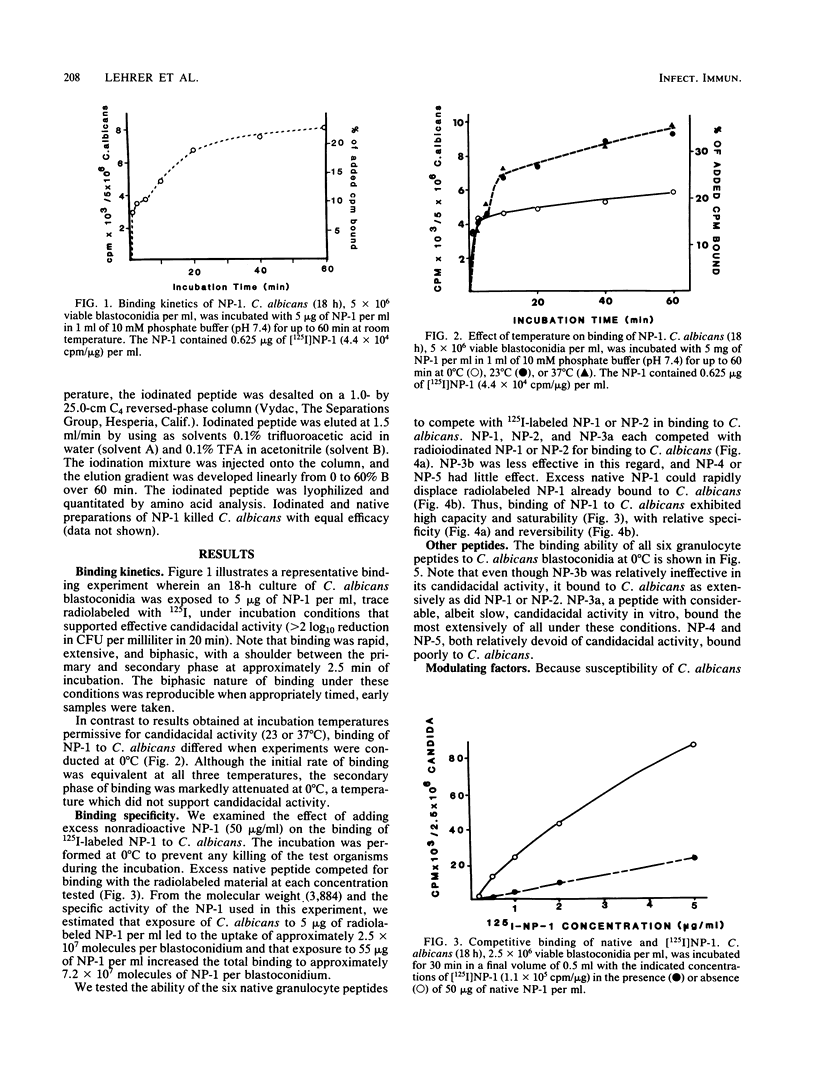
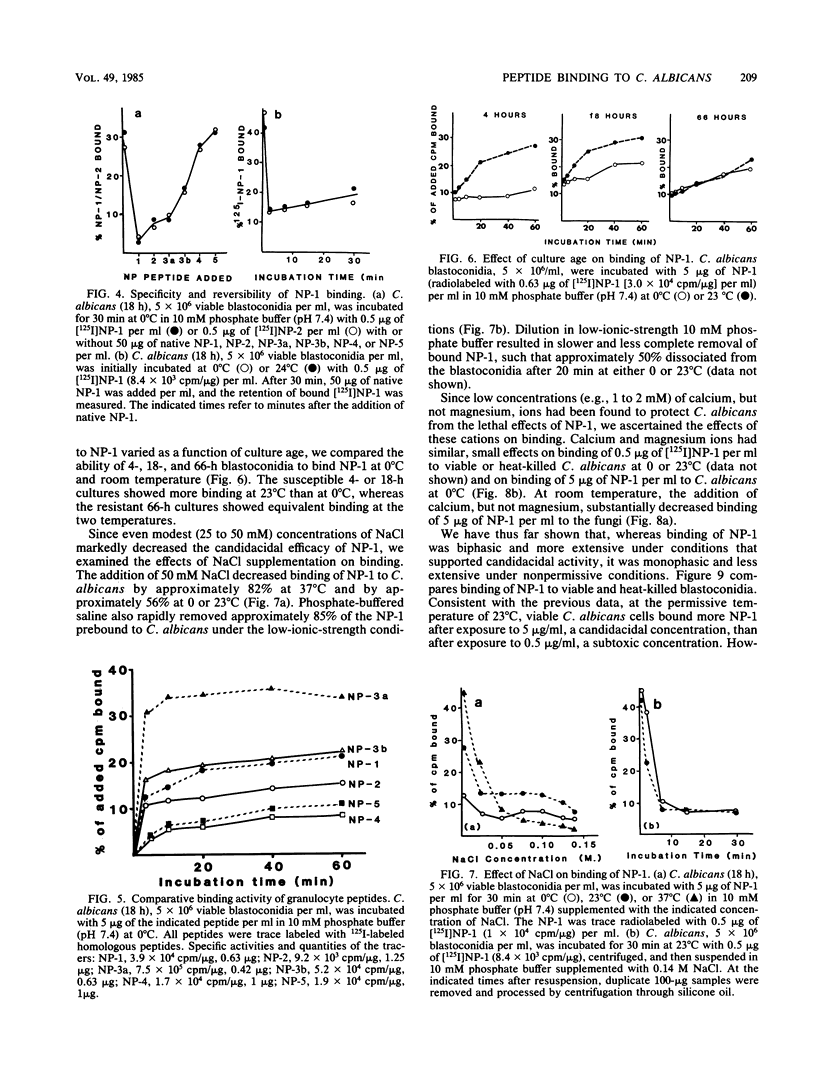
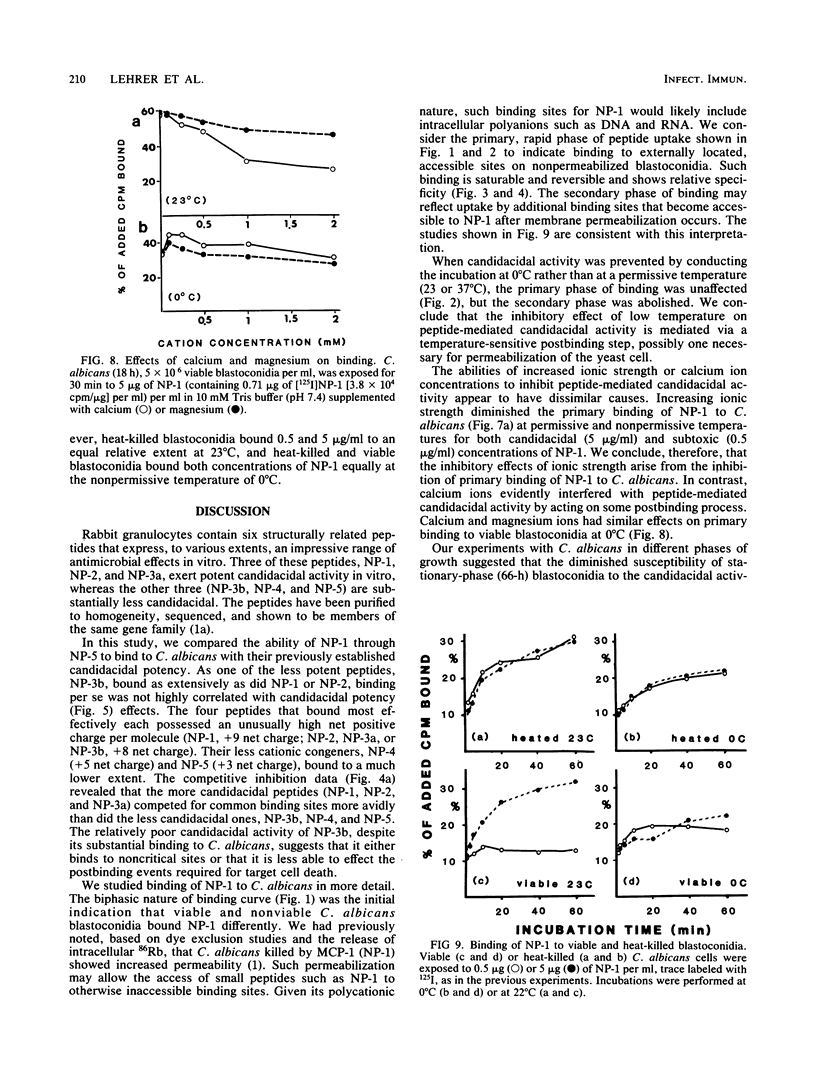
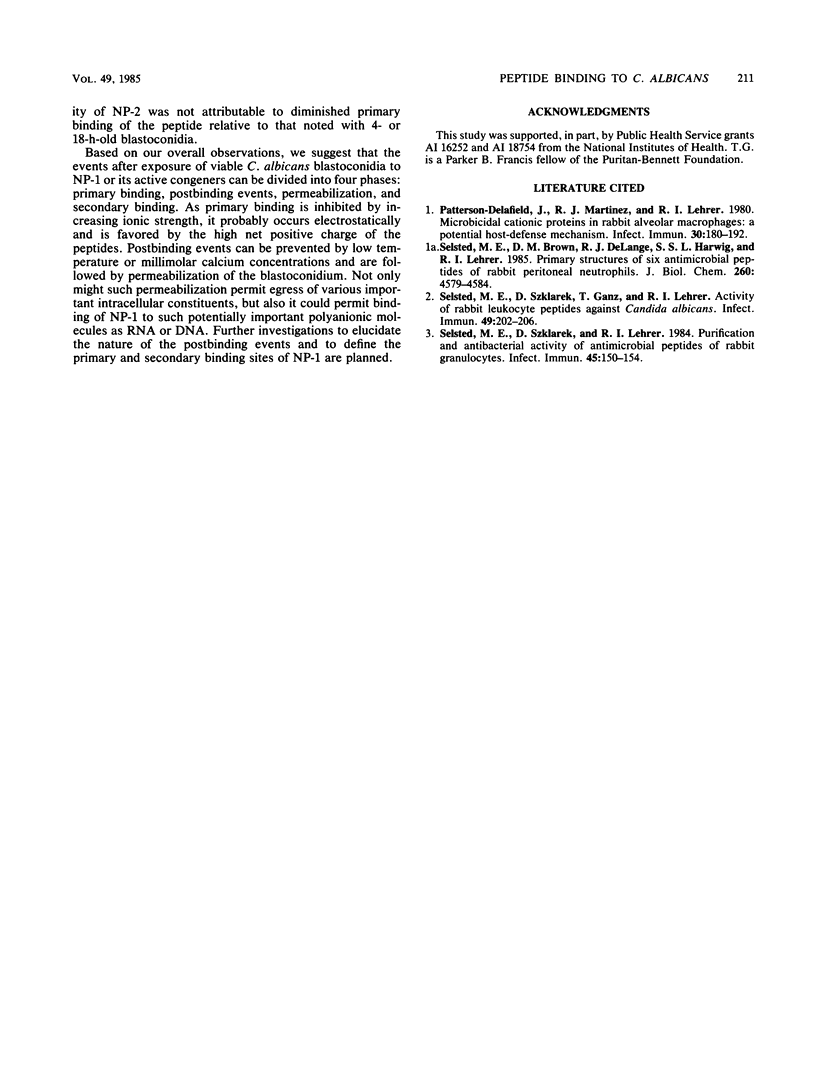
Selected References
These references are in PubMed. This may not be the complete list of references from this article.
- Patterson-Delafield J., Martinez R. J., Lehrer R. I. Microbicidal cationic proteins in rabbit alveolar macrophages: a potential host defense mechanism. Infect Immun. 1980 Oct;30(1):180–192. doi: 10.1128/iai.30.1.180-192.1980. [DOI] [PMC free article] [PubMed] [Google Scholar]
- Selsted M. E., Brown D. M., DeLange R. J., Harwig S. S., Lehrer R. I. Primary structures of six antimicrobial peptides of rabbit peritoneal neutrophils. J Biol Chem. 1985 Apr 25;260(8):4579–4584. [PubMed] [Google Scholar]
- Selsted M. E., Szklarek D., Lehrer R. I. Purification and antibacterial activity of antimicrobial peptides of rabbit granulocytes. Infect Immun. 1984 Jul;45(1):150–154. doi: 10.1128/iai.45.1.150-154.1984. [DOI] [PMC free article] [PubMed] [Google Scholar]


